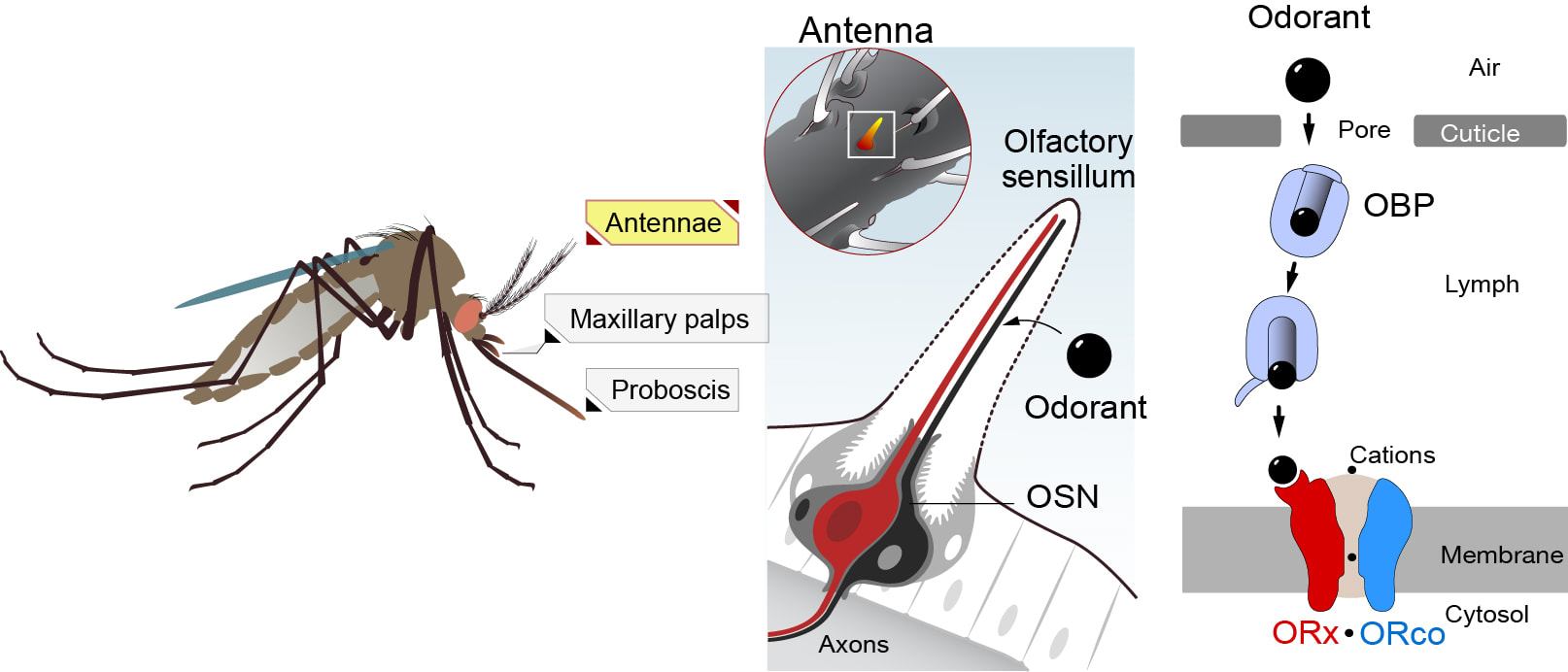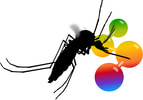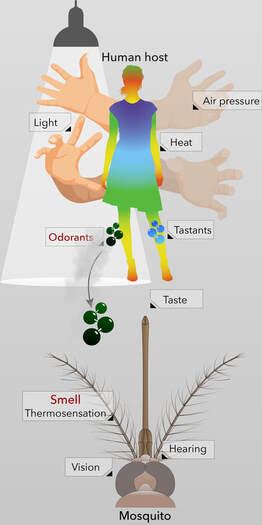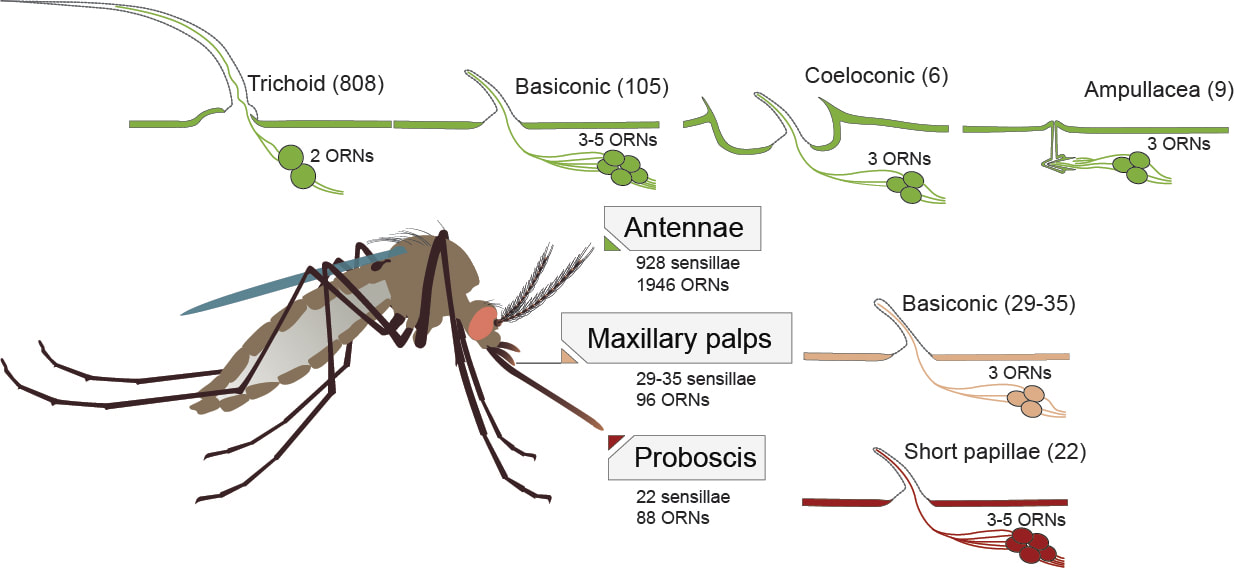Olfaction plays a major role in the life cycle of mosquitoes.
|
Mosquitoes live dangerous lives and suffer from multiple handicaps such as being fragile and poor flyers. Females must risk it all when they approach humans for a blood-meal. To avoid being squashed, mosquitoes deploy multiple senses such as the detection of (i) spectral information to avoid exposed lighted areas, (ii) air pressure to avoid movement, (iii) heat to detect hosts and (iv) chemicals (taste & smell) to select a suitable host. Olfaction or the sense of smell is however their main sensory modality to identify and locate a wide variety of resources.
Mosquitoes are both aquatic (larval stage) and terrestrial (adult stage) insects. The life cycle begins with eggs, many eggs. Larvae live a simple life mostly consisting of grazing on plankton, dead larvae and decomposing plant matter. They also exhibit escape behavior under the perception of threat such as fish and predator insects. It only takes a few days under optimal conditions for the larvae to pupate and emerge as adults. Adults rest, look for sugar sources such as nectar, locate human habitats, mate, seek a blood meal, identify suitable oviposition sites so the cycle continues. In all these activities olfaction plays a major role. |
The Peripheral Olfactory System Of Mosquitoes (Aedes aegypti)
To detect ecologically relevant odor cues, mosquitoes rely on multiple olfactory appendages, including the antennae, maxillary palps and the proboscis. The mosquito antenna is covered by thousands of perforated microscopic hairs (sensilla), to allow odorants to penetrate within. These sensilla take on a variety of shapes, which can get quite complex within. Based on morphological characters they are typically classified as trichoid, basiconic, coeloconic, ampullacea and short papillae sensilla types and collectively represent about 2,000 olfactory sensilla in which are packaged about 4,000 olfactory receptor neurons. In the schematic below, the numbers are per each appendage.

An odorant that has entered a sensillum is shuttled by odorant-binding proteins, which unload their cargo on odorant receptors located on the dendritic end of sensitive olfactory receptor neurons (ORNs). Their function is to convert chemical odorants into electrical signals, which is the vocabulary understood by the brain. A detailed description of this process is available here. Odorant receptors are small proteins in the nose of mosquitoes (here). To look at the odorant receptor content of larval and adult Zika mosquito Aedes aegypti, click here.





